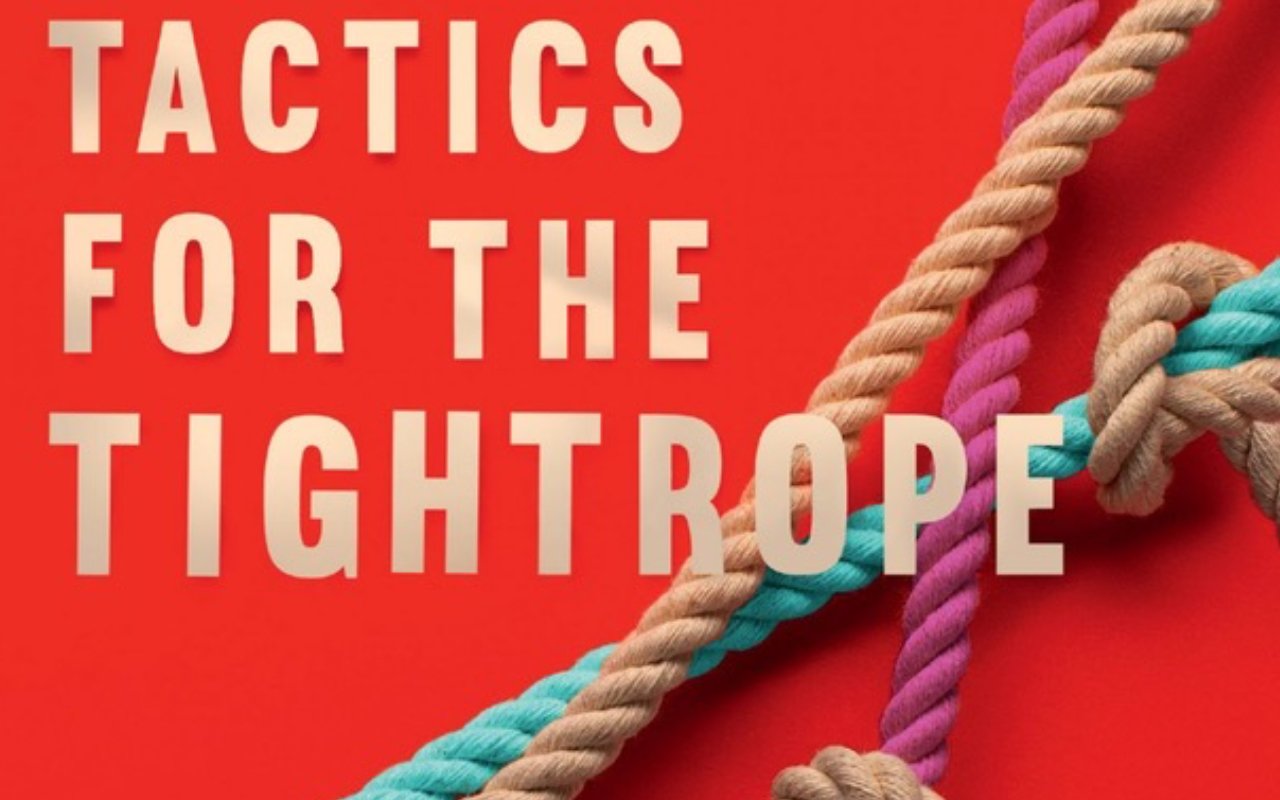
On the tightropes
How can we build a fairer cultural sector that works for artists, organisations, and communities? Mark Robinson explores some tactics for the tightrope act of shared culture.
This week the brave people of Future Arts Centres publish my book Tactics for the Tightrope. It starts with the image of people on an interconnecting network of tightropes. People of all kinds, some walking, some dancing or juggling, on feet, hands or moving with wheels and sticks. Some watching and catching. People coming together as movement and stillness meet where balance dances with the drop, with flight. Balance and movement. Change and stability. The risky, paradoxical, wide-awake dreaming that is culture.
Those on the tightropes want to take risks, do good and beautiful work, be healthy and to care for each other. Yet the sector is surrounded and beset with chronic conditions including systemic ableism, overextension, racism and sexism that call for tactics rather than the grand strategies of the powerful.
People who were most disadvantaged before Covid have been disproportionately hurt by it. The limits of conceptions of resilience as simply ‘developing diverse income streams’ have become ever clearer. Those on the tightrope are often pig sick of hearing about resilience.
Why we still need creative resilience
And yet, I still find the word a useful one, eleven years after writing Making Adaptive Resilience Real for Arts Council England. I have come to think of resilience as resistance to the damage done to our creative communities, in keeping with a long history of self-organisation such as trade unions, co-operatives, credit unions and other coping mechanisms.
For many things in culture, longevity matters. It helps accumulate memory and innovation into evolving traditions. It creates spaces for people to work long-term, and for others to come in, learn and pass through. It also demonstrates a set of values counter to the ‘stick it up and tear it down’ values of much commercial activity.
This requires creative resilience at all levels: the capacity of organisations and communities of people to be productive, valued, and true to self-determined core purpose and identity. This may involve absorbing disturbance, adapting with integrity in response to changing circumstances and positively influencing the environment.
There are some concrete actions being taken such as the Seven Principles set out by We Shall Not Be Removed. Growing networks and collectives of freelancers, arts centres and others give me hope that healthier approaches may become part of a reconfigured ecology.
Multiplying leadership and connecting communities
You cannot be resilient alone. There are an infinite variety of ways to do the tightrope with an infinite variety of people, but only if we abandon top-down heroic models of cultural leadership and governance. To achieve this we need to consider four domains: the self, inside (the organisation or practice), outside (the art form or cultural field) and beyond (in society).
An asset-based approach to sustainable livelihoods has potential to develop more agency for individuals and communities. This is not theory: starting with assets helps people make their own choices and find their own power. Who are you, what do you stand for, and what have you got to draw on? The book has lots of practical tools for people to try, adapt and improve in finding their own, unique ways to be on the tightrope.
Arts centres and creative activity can be a welcoming ‘potential space’ where people come together to explore and play. This starts with human connection and discovery. Having somewhere to go that is cultural or creative but can also be used for social, or even practical, purposes – to meet friends, to get a cup of tea, to get out of the house – is too often taken for granted by educated, connected frequent engagers in the arts, especially those involved professionally. The ‘welcoming space’ is both profound and everyday, and the basis of a fairer cultural sector for everyone.
From hurt to hope with a handful of principles
I wrote Tactics for the Tightrope because I am convinced of the potential for transition in the system, changing how the ecology works, and the norms, practices and distribution of power and resources. Multiple, ongoing transitions and changes at system level, using all our senses, muscles and imagination will be both more exhausting and more necessary than visions of overnight transformation by either burning it down or changing the locks.
A murmuration of birds takes shape and moves without top-down leadership thanks to highly nuanced and responsive networks, beginning with individuals and moving through groups to the edge. Creative communities can continually refine our values and actions similarly, using the frameworks of creative resilience and multiplying leadership in the learning space of self, inside, outside and beyond. We can resist selling ourselves and each other by plotting our own courses while self-organising as creative communities.
To do so we will need to remember a handful of basic principles that make creative resilience a form of resistance instead of co-option. How we work must build resourcefulness and creative capabilities in ourselves, in others and the collective. We should ditch hierarchical leadership models to connect, collaborate and multiply many, many voices. Our creative resilience should be a process of resistance. We should make ourselves useful and make space for others, even as we take up our own. Finally, we should keep some slack for ourselves and resist all temptations to ‘give 110%’ and thus undermine our own creative resilience.
Mark Robinson is Founder of Thinking Practice and Author of Tactics for the Tightrope.
Tactics for the Tightrope is published by Future Arts Centres on 23 July. It will be available as a free download in October.
Join the Discussion
You must be logged in to post a comment.